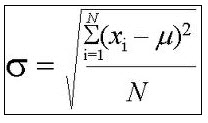Calculator to Compare Sample Correlations
Instructions: This calculator will conduct a statistical test to compare two given sample correlations \(r_1\) and \(r_2\) by using a Z-test. Please provide the sample correlations and sample size, along with the significance level, and the step-by-steps results of the z-test will be displayed for you:
Comparing two Correlation Coefficients
More about this z-test for comparing two sample correlation coefficients so you can better use the results delivered by this solver.
Can you compare two correlation coefficients?
Yes, indeed. A z-test for comparing sample correlation coefficients allow you to assess whether or not a significant difference between the two sample correlation coefficients \(r_1\) and \(r_2\) exists, or in other words, that the sample correlation correspond to population correlation coefficients \(\rho_1\) \(\rho_2\) that are different from each other.
The null and alternative hypotheses to be tested in this case are:
\[H_0: \rho_1 = \rho_2\] \[H_a: \rho_1 \ne \rho_2\]You will reject the null hypothesis when there is enough evidence to claim that the sample correlations come from population with different population correlations.
Z-test for comparing correlation coefficients
The formula for a z-statistic for two population means is:
\[z = \frac{z_1 - z_2}{\sqrt{\frac{1}{n_1-3} +\frac{1}{n_2-3} }} \]where
\[z_1 = \frac{1}{2} \ln\left(\frac{1+r_1}{1-r_1}\right)\] \[z_2 = \frac{1}{2} \ln\left(\frac{1+r_2}{1-r_2}\right)\]The null hypothesis is rejected when the z-statistic lies on the rejection region, which is determined by the significance level (\(\alpha\)) and the type of tail (two-tailed, left-tailed or right-tailed). You can also use our correlation coefficient calculator if you have sample data and you want to compute the actual correlation coefficients.


